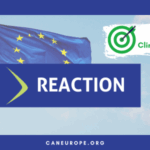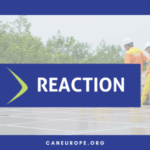Non-governmental organisations led by Climate Action Network Europe and European Environmental Bureau are putting forward an energy scenario which maps out a path to a climate neutral Europe by 2040. This collective work shows that more ambitious targets needed to implement the Paris Agreement are possible, including reducing greenhouse gas emissions by at least 65% by 2030 and ensuring 100% renewable energy supply by 2040.
This op-ed was originally published by Euractiv on 29 June 2020.
As European leaders vow unprecedented action to reach carbon neutrality and preserve a healthy planet for the next generations, it is essential that we get our priorities right when designing Europe’s future energy system and related infrastructure.
This is the time for our governments and institutions to align investments with a comprehensive plan to accelerate the transition to clean energy. The next 18 to 24 months present an important window of opportunity to boost both energy efficiency and the uptake of renewable energy and to accelerate the move away from fossil fuels. Should policymakers fail to live up to expectations, it will become increasingly difficult to limit global warming to 1.5°C and prevent catastrophic consequences for people, the economy and the planet.
This is why a coalition of civil society organisations is putting forward a collective, NGO-led, scenario for a fossil-free energy system. This work – the result of continuous analysis and collaboration with industry representatives and grid operators – illustrates the EU’s most straightforward pathway to achieving at least 65% emissions reduction by 2030 and net-zero emissions by 2040.
The publication of this scenario is very timely as we hope it will contribute to and influence upcoming discussions on future energy infrastructure planning envisaged under the Ten Year Network Development Plan (TYNDP) – an overview of the European electricity and gas infrastructure and its future development. It is high time that the associations entrusted with European grid planning, ENTSO-E and ENTSOG, update their scenarios and ensure that they are in line with the 1.5°C effort agreed under the Paris Agreement and focus on truly sustainable solutions.
The NGO-led scenario shows that to reach this goal, Europe must now start planning a complete phase out of fossil fuels. Coal would need to disappear from our energy mix by 2030, fossil gas by 2035 and oil by 2040.
According to the scenario, energy efficiency and a 100% renewable energy supply would be the two main pillars of our future energy system. Energy savings alone would halve the EU’s energy demand by 2050, while renewable electricity generation could increase almost four-fold between 2019 and 2030. Renewables would account for at least 50% of the EU’s gross final energy consumption in 2030 and 100% in 2040.
Key to this transition will be the electrification of all possible sectors and the full deployment of sustainable solutions, such as heat pumps,district heat networks and electric mobility. It is now important to assess the scenario in modelling work and identify the costs, the challenges and the opportunities that it brings. Similarly, to deliver such a scenario, it is important to understand energy infrastructure needs and plan accordingly.
The COVID-19 crisis is holding up a mirror to our society and the reflection shows us the need to build a more resilient world. Conscious of this, a fossil fuel-free scenario is perhaps more relevant and required at this point in time than ever before. By coupling science-based targets on energy and climate with the recovery mechanisms, bail-outs and stimulus packages, we can speed up the transition and prevent irreversible climate change.
Currently, no scenario which enjoys the full support of organised civil society is being modelled by Europe’s infrastructure planners under the TYNDP. If this were to change, energy infrastructure projects, as outlined in this civil-society scenario, would have a much higher chance of public support. It would also ensure that the infrastructure that is prioritised in the coming years (i.e. so-called ‘Projects of Common Interest’) corresponds to a Paris Agreement-compatible energy world. It is equally important to note that this approach would bring much-needed clarity about the necessary investment across the energy sector in order to reach the Paris Agreement, to fully implement the Clean Energy Package and to fulfil the objectives of the European Green Deal.
In line with this reasoning, a broad coalition of industry representatives supports the call for more ambitious clean energy scenarios. A formal Request to expand the ongoing planning scenarios for European energy modelling will be unveiled on 30 June. The civil society-led scenario will be published on the same day.
For a scenario to become reality, we need political will, scrutiny and stronger participation from a variety of stakeholders in the scenario development process. Policymakers must set a strong, clear and stable regulatory framework which supports the implementation of transformational measures and timely investments in the right sectors and technologies.
In 2014, the European Commission refused to look at a 55% emissions reduction scenario, it is only doing so now. The Commission should now take leadership and provide the basis for the full assessment of all relevant options. It must also respond to scientific evidence that shows that we need to cut our emissions by 65% until 2030. Therefore, discussing, modelling and further developing this scenario can be a game-changer in Europe’s ambition to safeguard climate, nature and health.
Wendel Trio, Director Climate Action Network (CAN) Europe
Antonella Battaglini, CEO Renewables Grid Initiative
Jeremy Wates, Secretary General, European Environmental Bureau (EEB)
Rana Adib, Executive Director, REN21



